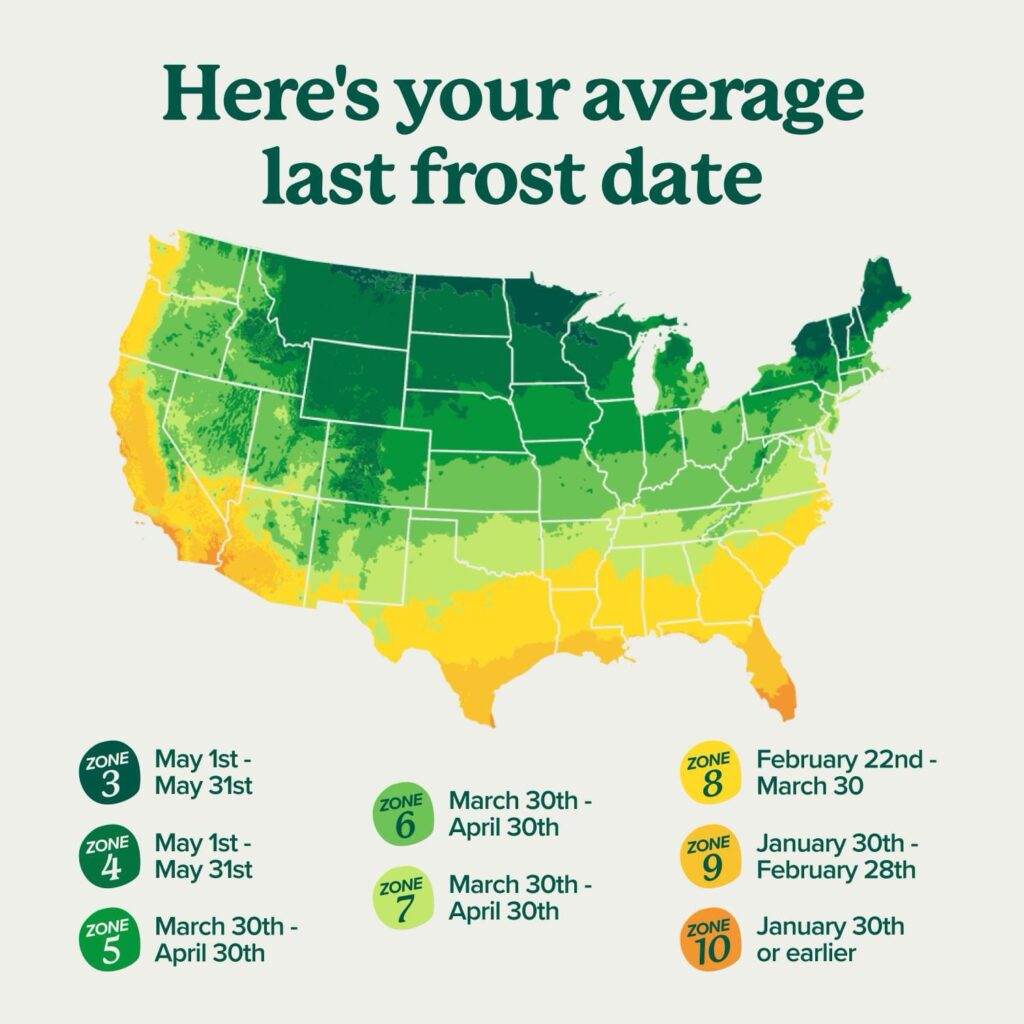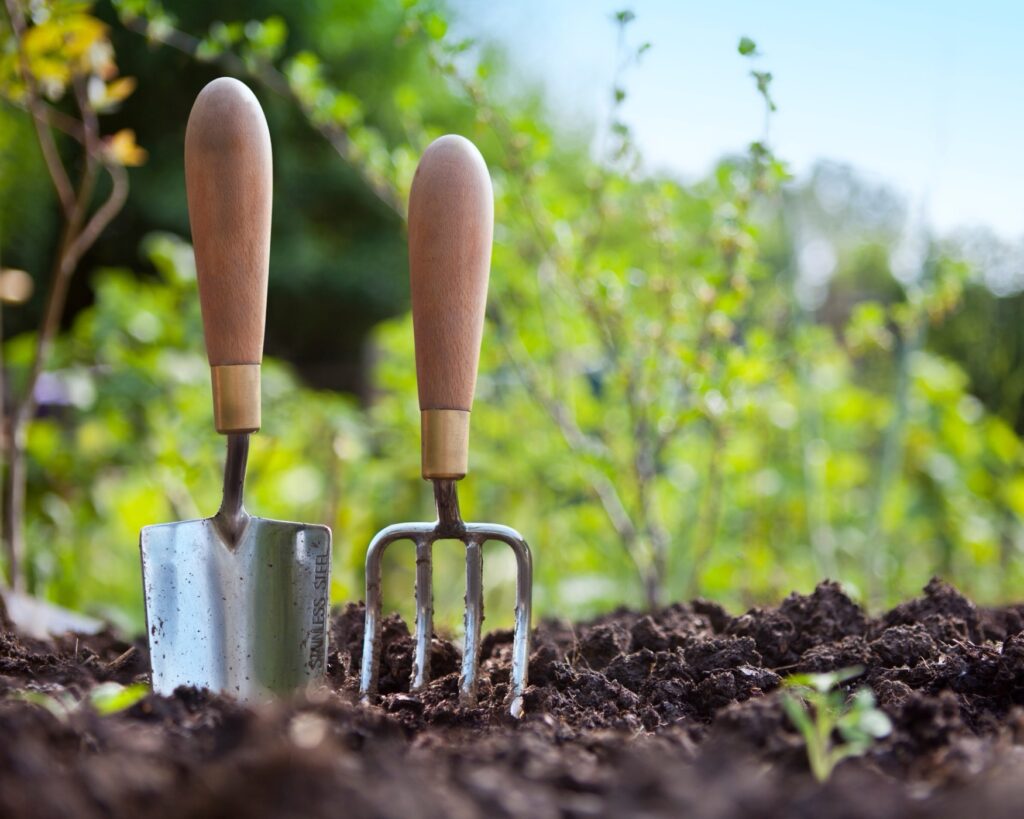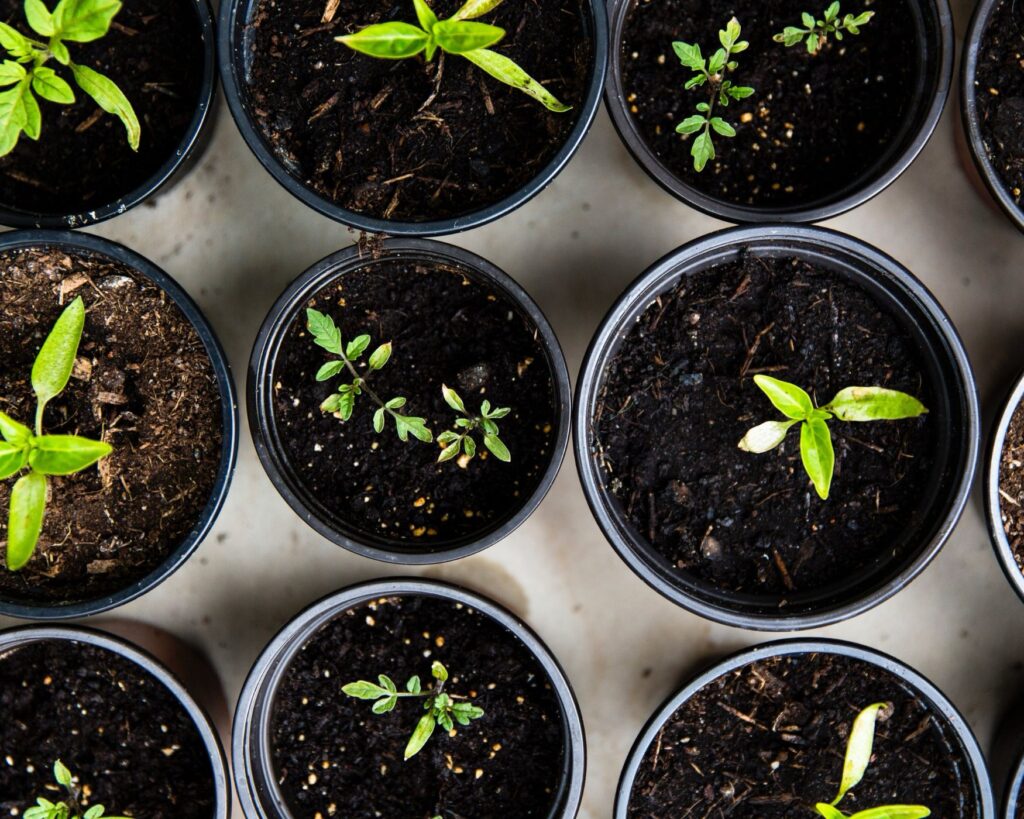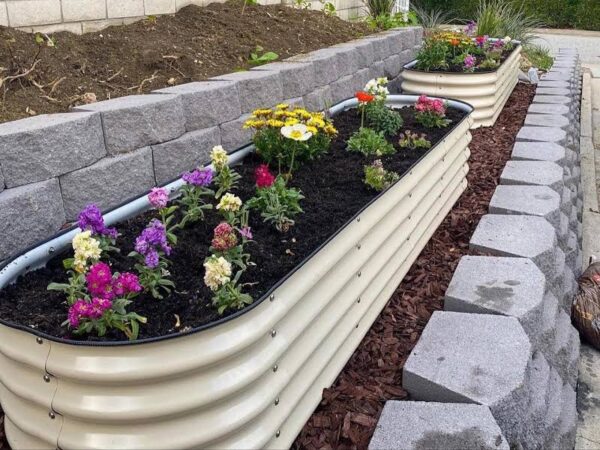Gardening enthusiasts understand the pivotal role that last frost dates play in determining planting times and ensuring the success of their crops. As the gardening season approaches, it’s essential to familiarize yourself with the last frost dates specific to your gardening zone. These dates mark the point at which it’s generally safe to plant tender crops without the risk of frost damage.
In this comprehensive guide, we’ll delve into the nuances of last frost dates across different gardening zones, providing valuable insights and practical tips to help you maximize your gardening success. Let’s embark on a journey through the various zones, unlocking the potential of your garden while navigating the complexities of last frost dates.

Zone 3 & Zone 4 (May 1st – May 31st)
In the frigid landscapes of Zone 3 and Zone 4, gardeners face unique challenges due to their late last frost dates. With planting windows typically falling between May 1st and May 31st, gardeners in these zones must exercise patience and careful planning to make the most of their growing season.
Given the short window of opportunity, it’s crucial for gardeners in Zone 3 and Zone 4 to select cold-hardy varieties and prioritize early-season crops that can withstand cooler temperatures. Some popular choices include leafy greens like lettuce and spinach, as well as cold-tolerant vegetables like peas and radishes.
To extend the growing season in these zones, consider using season-extending techniques such as row covers, cloches, or cold frames. These protective measures can help shield tender plants from late spring frosts and provide a few extra weeks of growing time.
By understanding and respecting the last frost dates in Zone 3 and Zone 4, gardeners can make informed decisions and set themselves up for a successful growing season despite the challenges posed by their northern climate.
Zone 5 (March 30th – April 30th)
Zone 5 presents a slightly earlier planting window compared to Zones 3 and 4, with last frost dates typically occurring between March 30th and April 30th. This extended growing season allows gardeners in Zone 5 to cultivate a wider variety of crops and enjoy an abundant harvest.
In Zone 5, gardeners have the opportunity to plant cool-season crops as early as March, taking advantage of the cooler temperatures to grow crops like broccoli, cabbage, and carrots. As the weather warms up in April, it’s time to transition to warm-season vegetables such as tomatoes, peppers, and cucumbers.
To optimize planting schedules in Zone 5, consider using techniques like succession planting, which involves staggering plantings to ensure a continuous harvest throughout the season. Additionally, practicing crop rotation can help maintain soil health and prevent the buildup of pests and diseases.
While Zone 5 offers a relatively generous growing season, it’s essential to remain vigilant for late spring frosts that can still occur during this period. Monitoring weather forecasts and providing protective coverings when necessary can help safeguard tender plants from frost damage, ensuring a bountiful harvest for gardeners in this zone.

Zone 6 (March 30th – April 30th)
In Zone 6, gardeners experience a similar planting window to Zone 5, with last frost dates typically falling between March 30th and April 30th. This timeframe offers ample opportunities for gardeners to kickstart their growing season and cultivate a diverse array of crops.
During the early spring months in Zone 6, gardeners can focus on planting cool-season vegetables such as lettuce, spinach, and peas. These cold-hardy crops can withstand the lingering chill of late winter and thrive in the cooler temperatures of early spring.
As the weather warms up towards the end of April, it’s time to transition to warm-season crops like tomatoes, peppers, and squash. Gardeners in Zone 6 can take advantage of the longer growing season to plant multiple successions of these heat-loving vegetables, ensuring a continuous harvest throughout the summer months.
To protect tender plants from unexpected frosts in Zone 6, consider using techniques like mulching and row covers to provide insulation and retain soil warmth. By staying vigilant and adapting to changing weather conditions, gardeners can make the most of their gardening season in Zone 6 and enjoy a plentiful harvest.
Zone 7 (March 30th – April 30th)
Zone 7 boasts a planting window similar to Zones 5 and 6, with last frost dates typically occurring between March 30th and April 30th. This moderate climate offers gardeners in Zone 7 ample opportunities to cultivate a wide range of crops throughout the growing season.
In the early spring months, gardeners can kickstart their garden by planting cool-season vegetables such as kale, broccoli, and radishes. These cold-hardy crops thrive in the cooler temperatures of early spring and can withstand light frosts.
As the weather warms up towards the end of April, it’s time to transition to warm-season crops like tomatoes, peppers, and beans. Gardeners in Zone 7 can take advantage of the longer growing season to plant multiple successions of these heat-loving vegetables, ensuring a continuous harvest well into the summer months.
To protect tender plants from late spring frosts in Zone 7, consider using techniques like floating row covers or cloches to provide temporary shelter. Additionally, mulching can help insulate the soil and retain moisture, creating a favorable environment for plant growth.
By understanding and respecting the last frost dates in Zone 7, gardeners can plan and plant their gardens with confidence, setting themselves up for a successful and rewarding growing season ahead.

Zone 8 (February 22nd – March 30th)
In Zone 8, gardeners enjoy an early planting window, with last frost dates typically occurring between February 22nd and March 30th. This mild climate provides gardeners with an extended growing season, allowing for a diverse range of crops to be cultivated throughout the year.
During the late winter and early spring months, gardeners in Zone 8 can take advantage of the mild temperatures to plant a variety of cool-season vegetables such as lettuce, spinach, and peas. These crops thrive in the cooler weather and can be harvested before the onset of summer heat.
As spring progresses and temperatures warm up, it’s time to transition to warm-season crops like tomatoes, peppers, and cucumbers. With the longer growing season in Zone 8, gardeners have the opportunity to plant multiple successions of these heat-loving vegetables, ensuring a continuous harvest well into the fall.
To protect tender plants from unexpected late frosts in Zone 8, consider using techniques like row covers or portable greenhouses to provide temporary shelter. Additionally, mulching can help regulate soil temperature and retain moisture, creating optimal growing conditions for plants.
By leveraging the early planting window in Zone 8 and implementing appropriate frost protection measures, gardeners can enjoy a bountiful harvest and make the most of their extended growing season.
Zone 9 (January 30th – February 28th)
Zone 9 is known for its mild winter climate, with last frost dates typically occurring between January 30th and February 28th. This early planting window offers gardeners in Zone 9 the opportunity to start their gardening season well ahead of other regions, allowing for a diverse range of crops to be grown throughout the year.
In the early winter months, gardeners can take advantage of the mild temperatures to plant cool-season vegetables such as lettuce, kale, and broccoli. These crops thrive in the cooler weather and can be harvested before the onset of summer heat.
As spring approaches and temperatures begin to warm up, it’s time to transition to warm-season crops like tomatoes, peppers, and squash. With the longer growing season in Zone 9, gardeners have the opportunity to plant multiple successions of these heat-loving vegetables, ensuring a continuous harvest well into the summer months.
To protect tender plants from potential late frosts in Zone 9, consider using techniques like row covers or frost blankets to provide temporary shelter. Additionally, mulching can help insulate the soil and retain moisture, creating optimal growing conditions for plants.
By leveraging the early planting window and mild climate in Zone 9, gardeners can enjoy a longer growing season and a diverse array of crops throughout the year.

Zone 10 (January 30th or earlier)
Zone 10 is characterized by its tropical climate, with last frost dates typically occurring on January 30th or even earlier. In this warm and balmy environment, gardeners have the unique opportunity to grow a wide variety of tropical and subtropical crops year-round.
In Zone 10, gardeners can plant heat-loving crops like tomatoes, peppers, and eggplants as early as January, taking advantage of the mild winter temperatures to jumpstart their growing season. Additionally, tropical fruits such as mangoes, papayas, and bananas thrive in the tropical climate of Zone 10 and can be grown with relative ease.
With the absence of frost in Zone 10, gardeners have the freedom to experiment with exotic and unusual crops that may not thrive in colder climates. From tropical flowers to exotic herbs, the possibilities are endless for gardeners in Zone 10 seeking to diversify their garden and embrace the lush beauty of the tropics.
To make the most of the tropical climate in Zone 10, gardeners should focus on providing adequate water, sunlight, and nutrients to their plants. Mulching can help retain moisture in the soil, while regular fertilization can ensure optimal growth and productivity.
By embracing the tropical climate of Zone 10 and selecting appropriate crops and cultivation techniques, gardeners can create a lush and vibrant garden oasis that thrives year-round.
Embrace Your Zone and Grow with Confidence
Understanding the last frost dates specific to your gardening zone is essential for planning and planting a successful garden. Whether you reside in the chilly climates of Zone 3 or enjoy the tropical warmth of Zone 10, knowing when to plant and when to protect your tender crops from frost can make all the difference in your gardening success.
By leveraging the information provided in this guide, you can confidently navigate the nuances of last frost dates and make informed decisions about what to plant and when. Remember to take into account your local microclimates, as well as any unique factors that may affect your garden’s growing conditions.
Whether you’re a seasoned gardener or just starting out, embracing your gardening zone and working within its parameters can lead to a more enjoyable and rewarding gardening experience. So roll up your sleeves, dig in the dirt, and let your garden flourish with the knowledge that you’re planting at just the right time for your zone. Happy gardening!
As an Amazon Associate we earn from qualifying purchases through some links in our articles.




